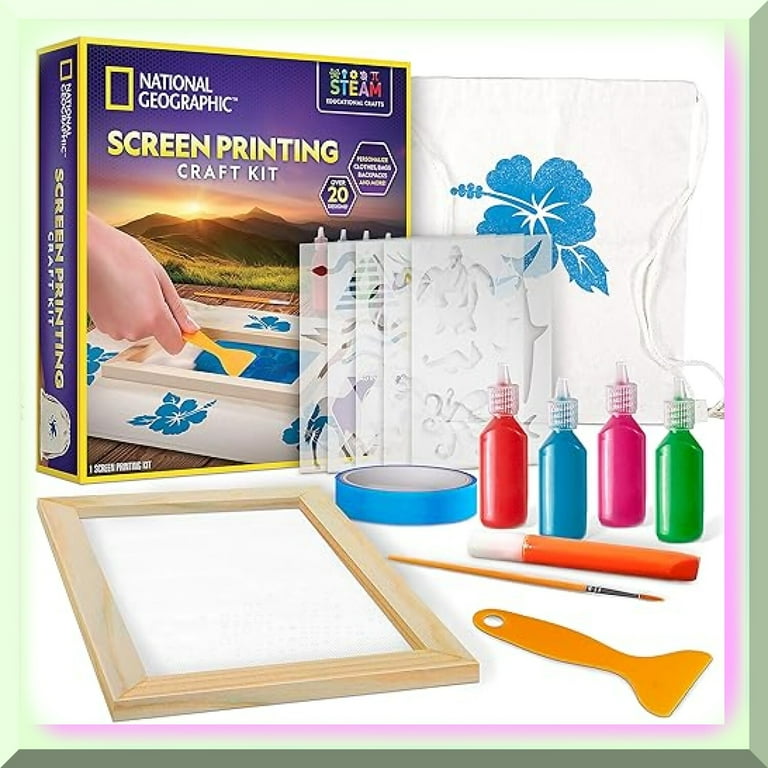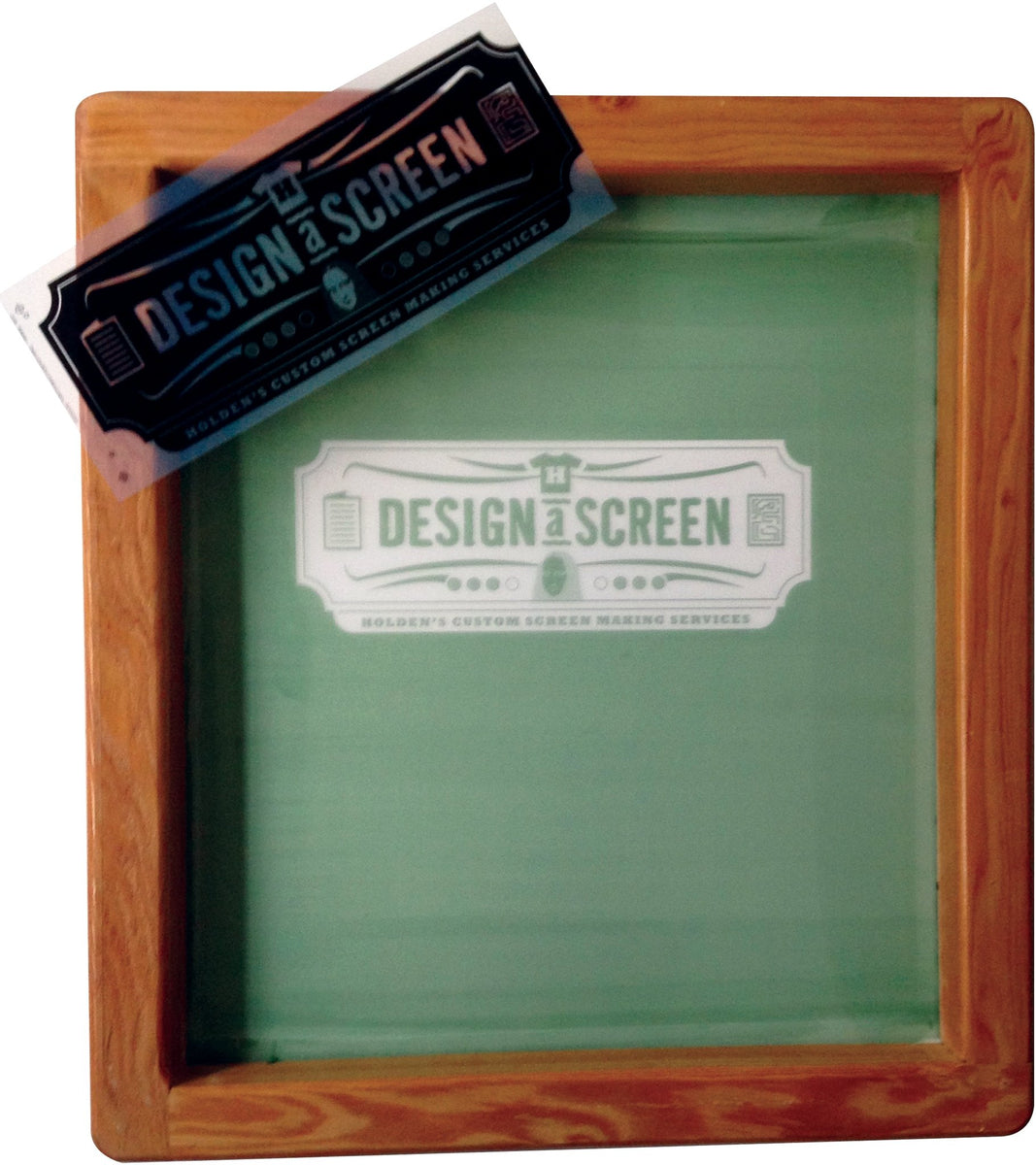Detailed Silk Screen Printing for Custom Art Apparel
Detailed Silk Screen Printing for Custom Art Apparel
Blog Article
Display Printing Uncovered: Every Little Thing You Need to Find Out About T-Shirt and Garment Printing Techniques
If you've ever wondered how those dynamic layouts end up on your favorite tee shirts, you're in the ideal area. Screen printing is a remarkable approach that integrates art with strategy, offering countless opportunities for imagination. Recognizing the principles, from tools to ink selections, can considerably affect your outcomes. Prepared to check out the vital components that make screen printing an art type? Let's reveal the details that can raise your jobs.
The Essentials of Display Printing: Just How It Works
When you dive into screen printing, you'll discover it's both an art and a science. At its core, screen printing entails developing a pattern, or display, that enables ink to travel through just in particular locations (screen printing kit). You begin by picking your layout and preparing your display with a light-sensitive emulsion. When you reveal this emulsion to light, it solidifies, leaving your design as an unfavorable area.
Position the screen over the fabric, after that use a squeegee to press ink via the display onto the garment. Each step is essential, and understanding them will elevate your screen printing abilities, changing straightforward garments into unique, meaningful items.
Kinds Of Display Printing Techniques
As soon as you realize the essentials of display printing, it's time to explore the different strategies that can raise your designs. One preferred approach is typical screen printing, where ink is pressed with a stenciled display.
If you're going for great information, consider discharge printing. This strategy eliminates color from the fabric, leaving a soft, vintage appearance. An additional choice is plastisol printing, recognized for its toughness and brilliant colors, making it a favorite for numerous brands. Lastly, try out halftone printing to create gradient results and elaborate layouts. Each technique has its distinct charm, so do not be reluctant to try them bent on discover what suits your style best!
Crucial Tools for Display Printing
To achieve spectacular outcomes in screen printing, having the ideal tools is basic. Initially, you'll require a strong display printing frame, which holds the mesh that transfers your style onto the garment. Next, purchase premium mops; these are vital for using ink equally across the display. You'll additionally require a good exposure system to produce your displays, along with a washout booth for cleansing them after usage. A trusted warmth source, like a conveyor dryer or warm press, is vital for curing your prints to guarantee long life. Don't forget a correct work space, outfitted with tables and storage for your products. Protective gear, such as masks and handwear covers, will certainly keep you safe from chemicals and inks. With the right tools, you'll be well on your means to generating professional-quality prints.
Picking the Right Inks and Materials
When picking inks and products for screen printing, you require to take into consideration the sort of ink that works best for your job. Think of fabric compatibility to guarantee your designs look fantastic and last long. Check out eco-friendly ink alternatives to make your printing process a lot more sustainable.
Sorts Of Display Inks
Picking the appropriate display ink is essential for accomplishing lively, durable prints that meet your project's demands. There are several kinds of display inks to check out. Plastisol ink is prominent for its adaptability and convenience of usage, supplying exceptional color opacity on dark textiles. Water-based ink, on the other hand, supplies a softer feel and is eco-friendly, making it ideal for those seeking to minimize their environmental influence. Release inks remove color from the textile, causing a soft, vintage look yet need particular handling. Ultimately, specialty inks, such as glow-in-the-dark or metal, can add special impacts to your layouts. Evaluate your project demands and choose the ink that straightens ideal with your preferred result.

Fabric Compatibility Factors To Consider
Understanding textile compatibility is vital for attaining high-grade screen prints, particularly since various materials react uniquely to numerous inks. Always examine your inks on example fabric to assure they adhere correctly and preserve shade stability. In addition, maintain in mind that fabric weight and texture can affect the last outcome, so picking the best ink and material combo is vital for your project's success.
Eco-Friendly Ink Options
Eco-friendly inks are ending up being a popular choice for display printers who desire to reduce their environmental impact while preserving high quality. When picking inks, take into consideration water-based inks, which are less unsafe and less complicated to clean up compared to traditional solvents. These inks bond well with materials, providing dynamic results without hazardous chemicals. You might also discover eco-solvent inks that make use of fewer unstable organic substances (VOCs), making them a safer option for both your health and wellness and the world.
In addition, try to find inks made from eco-friendly sources, such as soy or vegetable-based choices. By choosing the ideal inks and materials, you'll not only create magnificent designs however likewise add to a much more sustainable printing procedure. Make the switch, and your prints will certainly reflect your dedication to the setting!
Preparing Your Design for Display Printing

File Format Needs
To assure your design looks lively and sharp on material, you'll need to pay close attention to submit style requirements for display printing. Make certain your style has a clear background to prevent undesirable white edges on your prints. Maintain shade settings in mind; CMYK is basic for display printing, so convert your RGB develops appropriately.
Color Splitting Up Strategies
Color separation is a necessary action in preparing your design for display printing, and understanding it can substantially enhance your print high quality. You'll require to damage your style right into individual colors, as each shade needs a different display throughout printing. Start by identifying all the shades in your web link style and develop layers for each one. You can utilize software application like Adobe Photoshop or Illustrator to isolate and different shades efficiently. Be particular to save each layer as a separate data, normally in a format like TIFF or PSD. This accuracy not only assures accurate shade representation however also simplifies the printing process. By focusing on shade splitting up, you'll attain lively and specialist cause your screen-printed garments.
Resolution and Size
Attaining the very best cause display printing starts with guaranteeing your layout has the ideal resolution and dimension. Preferably, your art work ought to be at the very least 300 DPI (dots per inch) for sharp, clear prints. If you utilize reduced resolution, your final item could look unprofessional and pixelated.
When it pertains to size, consider the dimensions of your print area. Style your art work to match the last print dimension, preferably creating it in the actual measurements you'll be printing. By doing this, you'll avoid any type of unforeseen scaling problems.
Constantly inspect your layout in both vector and raster layouts. Vector graphics can be scaled without losing high quality, making them excellent for display printing. Preparing properly will ensure your style looks outstanding on every garment!
Step-by-Step Screen Printing Process
Screen printing is a dynamic process that allows you to create lively designs on different surfaces. To begin, you'll require a display, solution, and your chosen ink. Prepare your display by cleansing it completely. Next, apply the emulsion evenly and allow it dry in a dark area. Once dry, reveal your display to light with your style placed on it, which will harden the solution where the light hits, creating a stencil - screen printing kit.
Put ink onto the screen and make use of a squeegee to push the ink with the stencil onto the material. Raise the screen thoroughly and let the print dry. You've effectively display published your style.
Tips for Effective Display Printing Projects
While you're diving right into your display printing jobs, keep in mind that preparation is crucial to success. Start by collecting all your materials-- inks, squeegees, displays, and garments. A clean workspace assists protect against unwanted mistakes, so clean up before you begin.
Following, confirm your art work is high-resolution and appropriately sized for your garment. Evaluate your display for appropriate exposure and clean it completely to stay clear of smudges. When blending your inks, comply with the manufacturer's standards to achieve the appropriate consistency.
Throughout printing, apply even pressure with your squeegee for regular results. Do not rush; take your time to confirm each print satisfies your standards. After printing, allow your garments dry totally prior to handling or packaging them.
Last but not least, always keep an example of your job for future recommendation. This means, you can evaluate your progress and improve your methods with time. Happy printing!

Often Asked Concerns
For how long Does It Require To Establish a Screen Printing Task?
Establishing a screen printing task generally takes about 30 mins to an hour. You'll prepare the screens, mix inks, and readjust journalism. The moment differs based on complexity and experience, so remain organized!
Can I Publish on Different Material Keys In Utilizing the Same Technique?
Yes, you can publish on various fabric kinds making use of the exact same technique, however you'll need to change your inks and settings. Some textiles soak up ink in a different way, so trying out assurances the very best results for each material.
What Prevail Blunders to Prevent in Display Printing?
When display printing, avoid common errors like using the incorrect ink, disregarding correct exposure times, or missing pre-press checks. Always test your configuration and maintain clean displays to ensure high quality outcomes each time.
How Can I Effectively Clean and Preserve My Display Printing Tools?
To effectively tidy and keep your screen printing devices, you must consistently wash screens with suitable solvents, check squeegees for wear, and guarantee all tools are stored completely dry and dust-free. Uniformity protects have a peek at these guys against pricey repairs and boosts efficiency.
Is Display Printing Eco-friendly Contrasted to Other Approaches?
Screen printing can be more eco pleasant than various other methods, particularly if you utilize eco-conscious products and water-based inks. By choosing sustainable supplies and practices, you reduce waste and minimize your effect on the planet.
Screen Printing Uncovered: Whatever You Need to Know About T-Shirt and Garment Printing Strategies
At its core, display printing includes developing a pattern, or screen, that enables ink to pass with only in certain locations. Position the screen over the material, then make use of a squeegee garment printing to press ink through the display onto the garment. One preferred method is standard screen printing, where ink is pressed via a stenciled screen.When selecting inks and products for screen printing, you need to take right into account the kind of ink that functions ideal for your project.
Report this page